In this post I am going to give an overview of some of the key components and specifications for a biathlon rifle.
A biathlon rifle should have the following features:
- A manually actuated (bolt action) .22lr caliber rifle with detachable 5 shot magazines.
- Have a barrel capable of more precision than you will achieve as the shooter.
- Have a stock, sights, and trigger that help/allow you to be a precise and accurate shooter from both prone and offhand position.
- Have a stock that allows for a carrying harness, shooting sling, and the secure storage/carry of four magazines.
- Meets IBU rules for competition (read full rules here, pg 9.):
- Total weight at least 3.5kg
- Trigger weight at least 500g
- The distance between the center-line of the barrel and the lower edge of the forestock, including magazine and trigger guard, must not exceed 140 mm.
- Fit your budget!
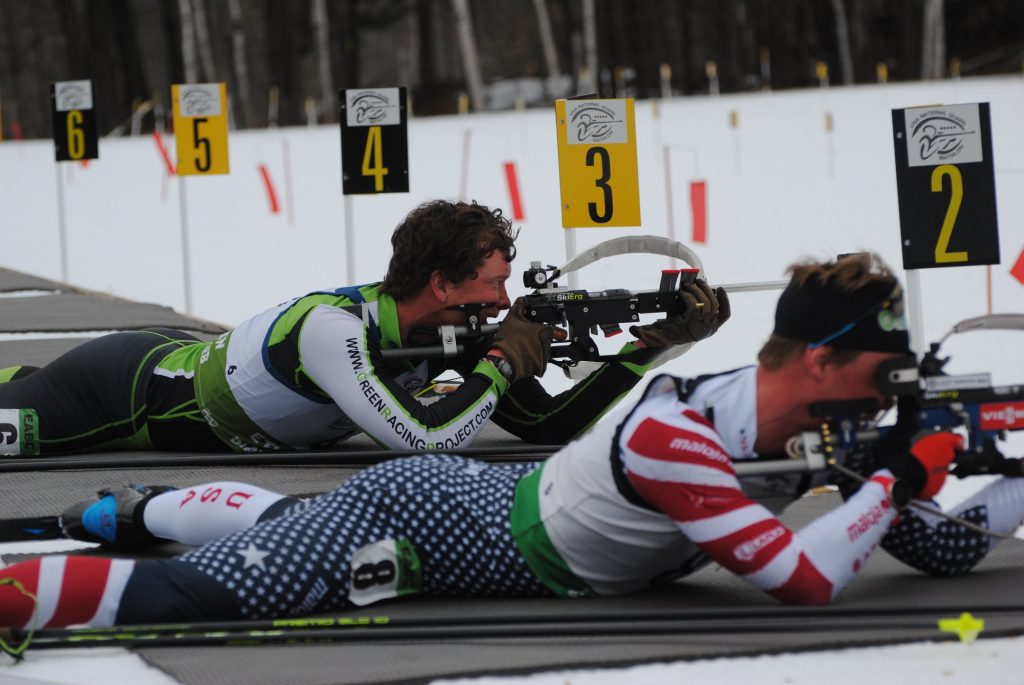
Action:
There are two types of actions that are commonly used in biathlon. The first is a traditional bolt action, the second is a straight-pull or toggle action. Both use a “bolt” that is manually operated by your dominant hand to chamber each round and eject the spent casing after each shot.
A traditional bolt action requires the bolt to be pushed forward and rotated down to lock shut for each shot, then rotated up and pulled back to open. This is a very simple and robust mechanism, but It requires a certain amount of movement of your hand/arm to operate which can disturb your shooting position between shots. Examples of biathlon rifles with traditional bolt actions would be the CZ 457, Savage MKII, and Any Anschutz 64 or 54 bolt action variants.
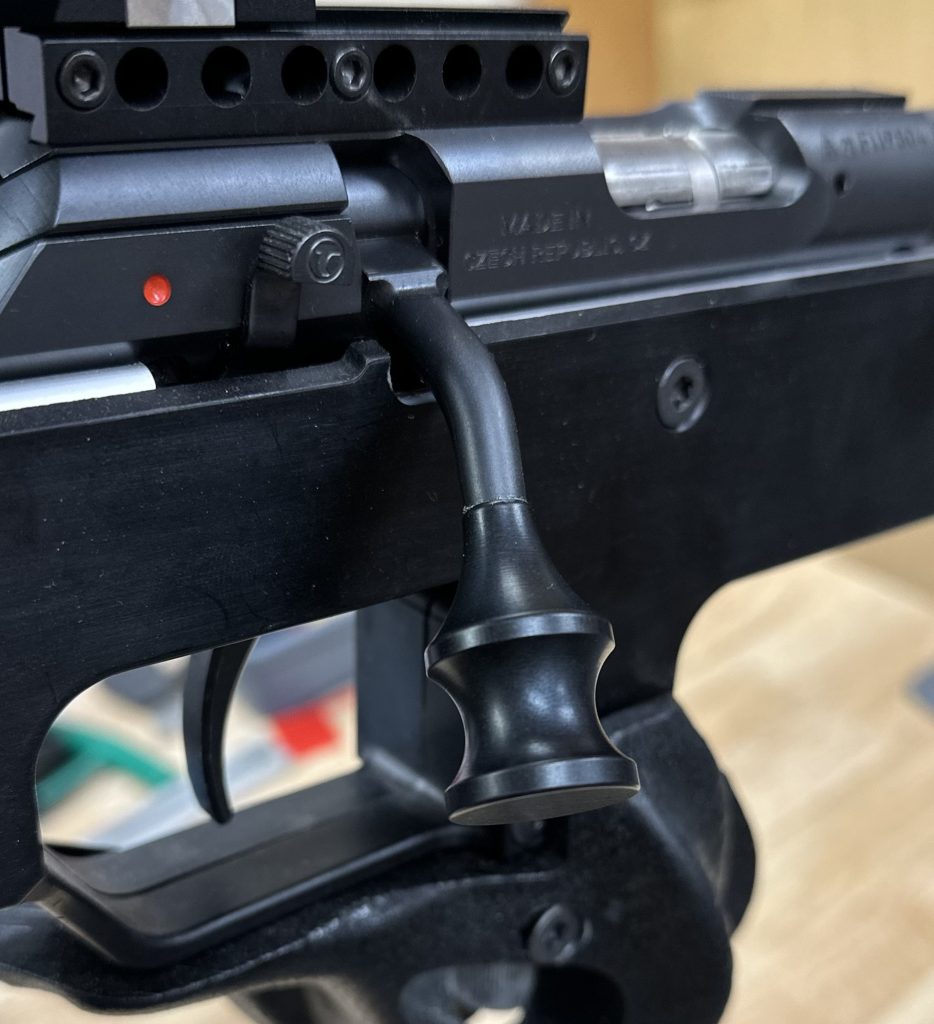
A straight pull or toggle action bolt is just what it sounds: you only need to slide the bolt straight forward and back to load and unload. The primary advantage of a well designed straight pull or toggle action is that it allows the shooter to maintain shooting position throughout the reloading cycle. That said, not all straight pull actions are equal. The best type of action currently available for biathlon is the Fortner action. This is a straight pull action invented and manufactured by Peter Fortner in Germany, and sold by Anschutz in the 1827F biathlon rifle. The ergonomics of the Fortner action are ideal for biathlon, making it easy to operate very smoothly from biathlon shooting positions.
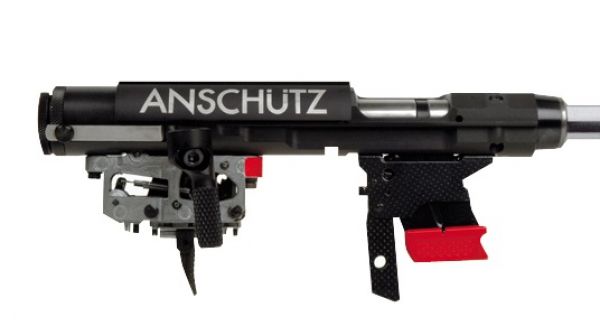
There are several other straight pull or toggle action designs out there. The Izhmash 7-2, 7-3, 7-4, and Volquartsen Summit actions both use a linkage style toggle bolt, which can be nearly as good as a fortner, but may require a modified bolt handle to allow the bolt to be pushed closed more easily with your thumb. The browning T-bolt design offers a straight pull bolt but unfortunately the location of the handle and locking mechanism don’t allow for a very smooth operation and thus it still requires the shooter to completely remove their hand from the stock to operate quickly.
With a well tuned and smooth traditional action a skilled shooter can cycle the bolt with little disruption of their position, but likely never as fast as a Fortner action.

Barrel:
The barrel is a critical component of any rifle, and not all are made equal. Barrels come in different lengths, diameters, and materials and can be made using different processes, with varying levels of quality control. There are three main processes used to make rimfire rifle barrels: Hammer Forging, Button Rifling, Cut Rifling, each has its advantages, but generally Button rifling and cut rifling produce the best precision. At some point we will release more content specifically on barrels… but for now we’ll keep it simple: You want a barrel that is capable of producing more precision than you, the shooter, in a practical biathlon scenario. Generally that scenario is a sling supported prone position, in the winter. It’s likely that the only barrels in the world manufactured with cold weather performance in mind are those used made by Anschutz for their 1827F biathlon rifles, however that doesn’t make them the only barrels that will work in the cold, nor does it mean that every Anschutz barrel will perform well in the cold. There are many variables at play (ammo, cleanliness of barrel, etc.). It’s also important to remember that there’s different degrees of cold. A barrel that shoots poorly at 5 F may shot acceptably at 20F, making it fine for many biathlon racing scenarios. Stay tuned for more content on barrels and cold weather performance.
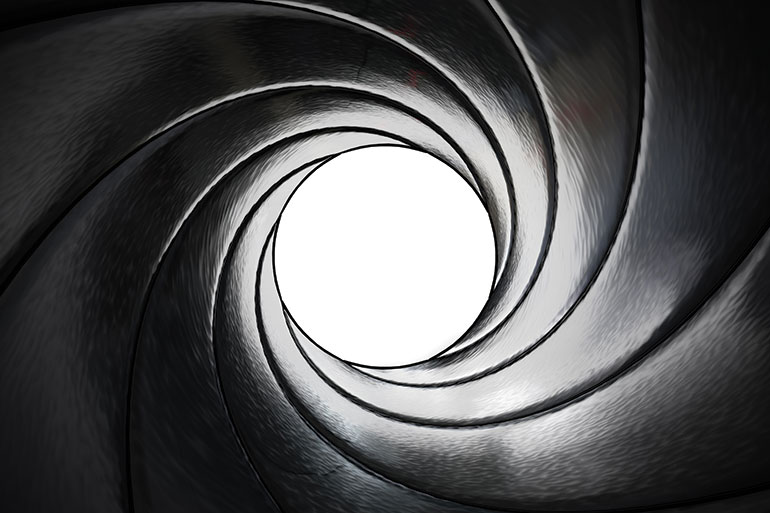
Trigger:
There are two common categories of triggers, Single stage, and two-stage. You could probably include “shitty single stage” as a third (and probably the most common) type. Regardless of type, the trigger pull weight (force required to fire the shot) must be greater than 500g (1.1lbs). Here’s a quick run down:
Single Stage: a good single stage trigger has no movement before the shot goes off. You apply pressure and the trigger doesn’t move until you have applied the “breaking” force, then it releases, firing the gun and moving backward slightly. Most single stage triggers are not perfect though, and have what’s described as “creep”. Creep occurs when you apply pressure very slowly and the trigger will move a little before going off. Creep is often inconsistent, and generally not a great thing, but in some instances can act like a two-stage trigger.
Two Stage: a two stage trigger has a set amount of movement before stopping again and requiring additional pressure to go off… thus the trigger can be pulled in two well defined stages. Two stage triggers are traditionally only found on higher-end target and competition rifles, and are extremely helpful, particularly when shooting from unstable positions. The ability to do a little “work” on the trigger before it goes off allows the shooter to be primed physically and mentally to make a smooth shot release on target. Two stage triggers help make you a better shooter by facilitating a better trigger control process.
Stock:
Regardless of your choice of rifle, it’s the stock, sights, and accessories that will really make it a biathlon rifle. A biathlon rifle stock needs to provide several key functions:
- Provide ergonomic grips for both prone and offhand shooting that allow you to comfortably and consistently hold the rifle and manipulate the action.
- Provide an adjustable or properly positioned cheek rest for the use of biathlon sights
- Allow up to 4 magazines to be carried safely on the stock
- Allow for the attachment of a carrying harness and prone shooting sling.
- Meet IBU Rules
In addition to the necessities, a good biathlon stock will provide some level of adjustment, and/or be custom made to allow the athlete to stand and lay in comfortable positions, supporting the rifle with little to no use of muscles. The rifle stock should be able to conform to the shooter’s body positions.
The “holy grail” of biathlon stocks is a true custom stock built to fit a shooter perfectly. Unfortunately, getting a stock fit perfectly can often take an entire season or more of use, making small modifications over time to dial in the fit. Those who successfully achieve the perfect fully custom stock are generally high level athletes who are able to work closely in-person with a stock maker and shooting coach over the course of (often) years before getting it right. Shooting is a constant evolution, and I would only recommend pursuing a fully custom stock for an athlete that has been in the sport at a high level for several years and knows exactly what they want.

More realistically, the best stock for most biathletes is going to be a stock that is designed to be adaptable and adjustable, allowing the athlete to dial in the stock over time. This concept has caught on quickly over the last several years, and today many competitive biathletes, all the way up to world cup and olympic level, choose to use adjustable and modular stocks that can evolve with them, often incorporating custom made parts that can be replaced to allow the stock to evolve with the athletes shooting.
Sights:
Having the correct sights is critical for a biathlon rifle. Sights must be non-magnified peep sights consisting of a front “globe-style” sight that can accept apertures, paired with an adjustable “peep” style rear sight. The rear sight should be easily and consistently adjustable in small increments, and should be solid enough to hold its position through use. Both front and rear sights should also have snow covers if winter biathlon is the goal.
Rear sights can further be accessorized with a blinder, eye shade, or eyecup to help manage the light conditions for better sighting, and to ease eye strain or eye dominance issues. Additionally, the diameter of the rear “peep” aperture can vary. A 1.1mm rear aperture or “peep disc” is fairly standard, but with the use of an adjustable Iris-style aperture one can set this diameter from 0.5mm-3mm.
Stay tuned for our next post which will summarize the available options for biathlon rifles.
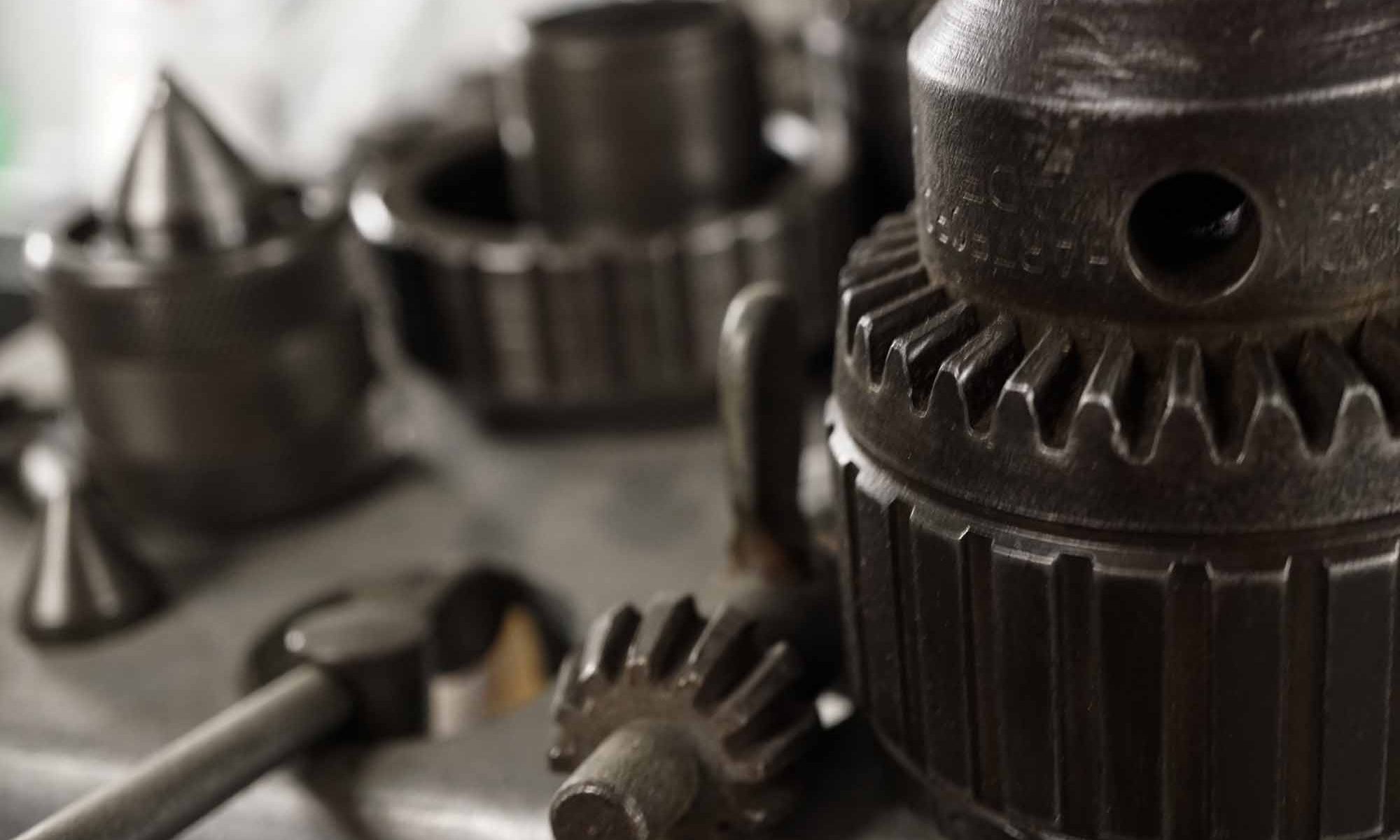

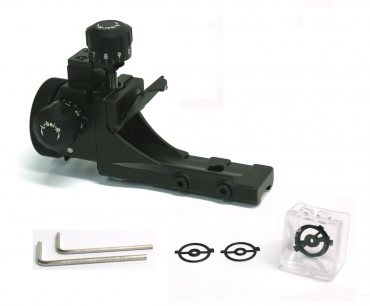
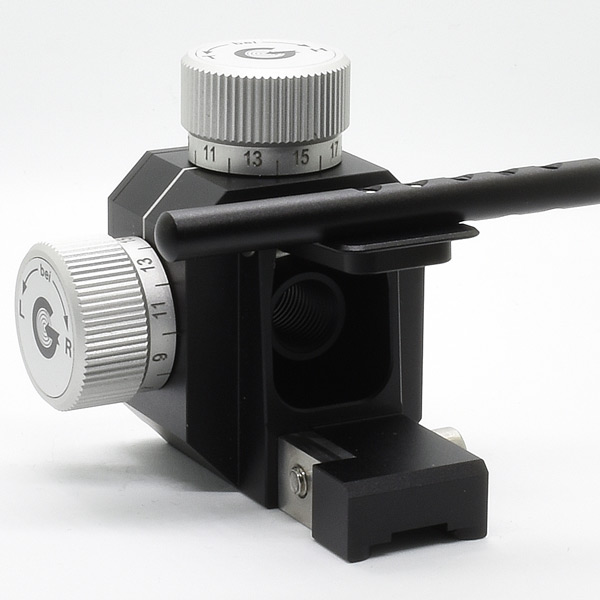
Greetings.
After a 9 month wait a FWB P75 biathlon pellet rifle arrived. I was surprised by the consistent long smooth trigger pull with unpredictable end. I’m used to crisp glass breaking no take up high end triggers. I’m writing you to ask if this P75 trigger is representative of Biathlon triggers in general, being used in a highly exertion state perhaps the longish pull is desirable to prevent a premature discharge?
Thanks
John Takacs DO
John, Most biathlon rifles will have a two stage trigger, allowing you to put some pressure on the trigger and it moves to a stop, then requires more pressure to fire. This is very helpful when shooting under stress.
Hey Ethan,
I see the James Bond intro in that barrel rifling. Am I correct in my formulation that 22lr rifle barrels have a different twist rate, more groves and therefore would look a bit different than the 007 intro? I ask because I am thinking about using an endoscope to monitor the health of my barrel.